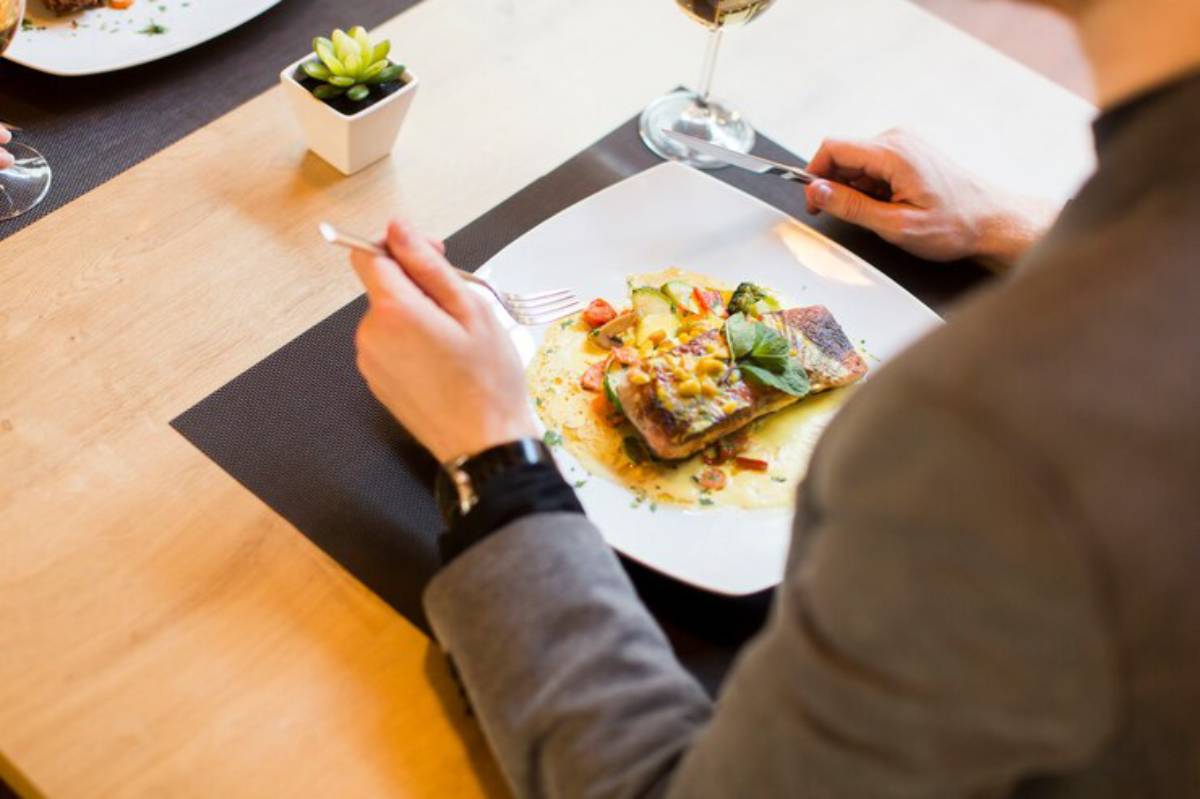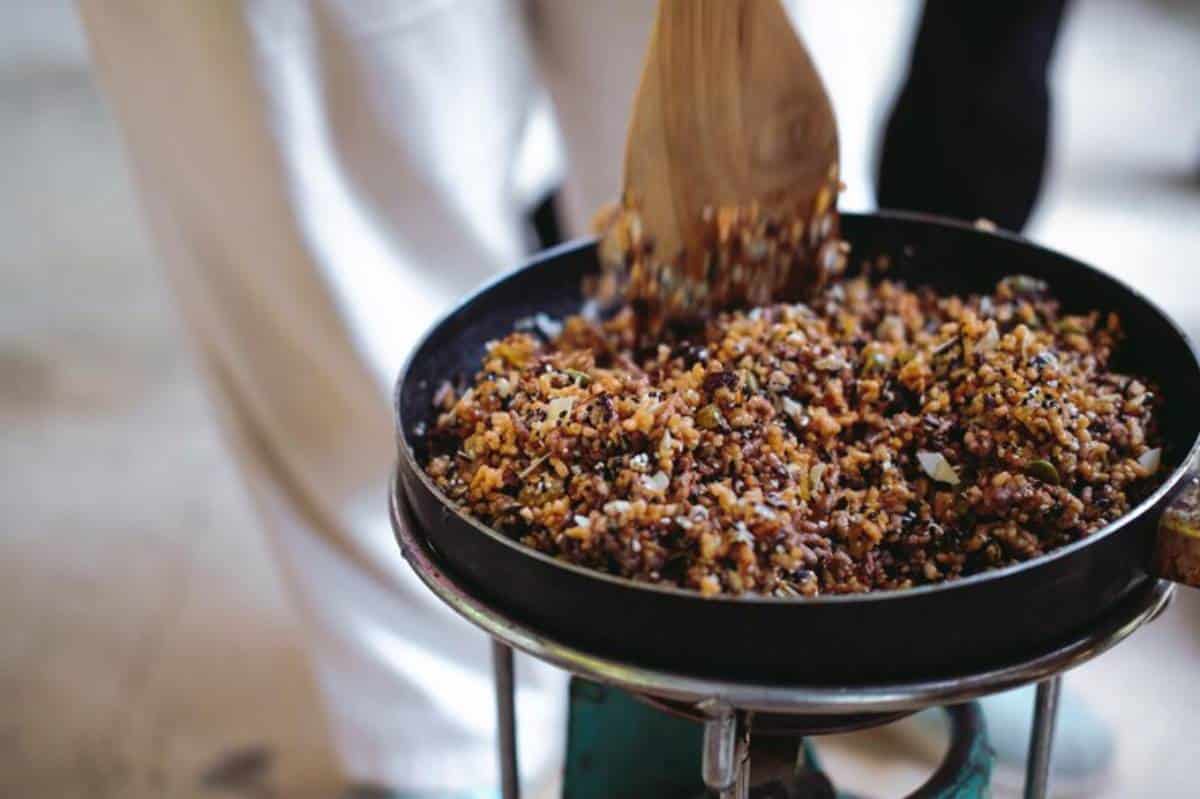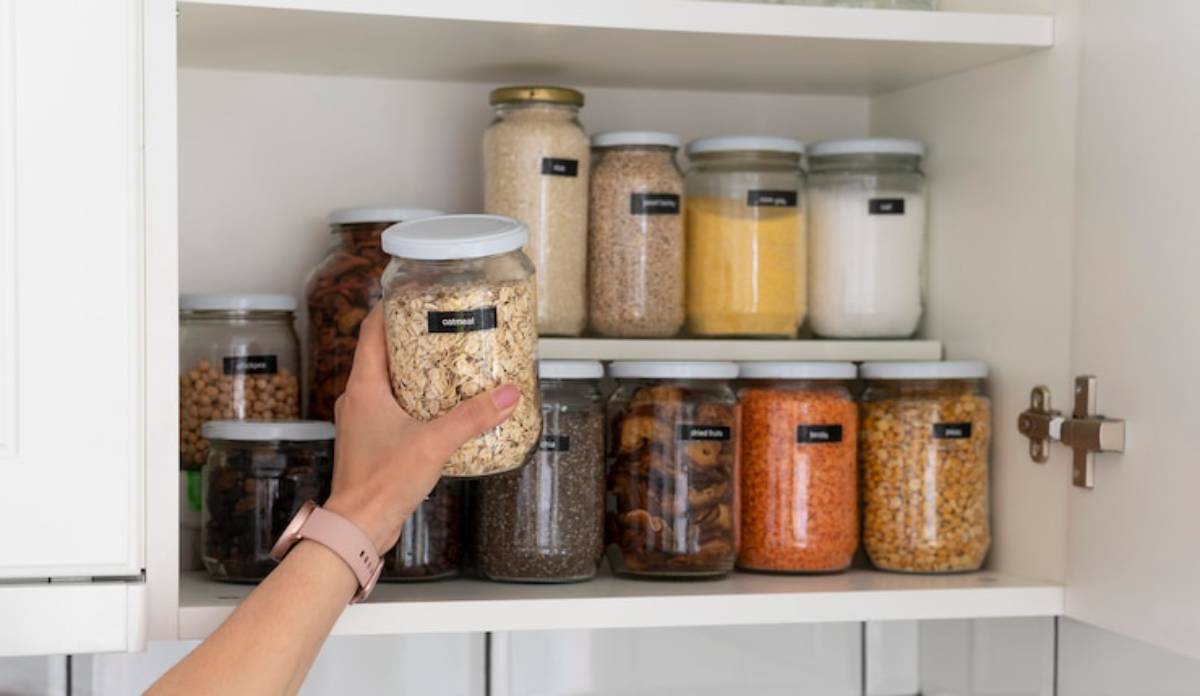
Finding & Storing Heirloom Pantry Items
Why Heirloom Ingredients Deserve a Permanent Spot in Your Pantry
Open any well-stocked kitchen cupboard and you’ll likely find olive oil, spices, dried beans, and flour. But when your pantry includes heirloom pantry staples, you’re not just storing ingredients — you’re preserving history, culture, and flavour profiles that mainstream supply chains often leave behind.
From nutty ancient grains to bold, sun-dried heirloom chillies, these pantry heroes do more than feed. They transform ordinary recipes into gourmet dishes, helping you create meals that feel handcrafted, rooted in tradition, and bursting with character. They are the quiet powerhouses of heritage cooking and fine dining alike.
In this guide, we’ll walk you through how to source high-quality heirloom ingredients, which ones are worth keeping on hand, and how to store them correctly so they last, without compromising flavour, texture, or integrity. Whether you’re new to the world of heritage foods or looking to build a gourmet pantry that reflects your passion for quality, this is your starting point.
What Are Heirloom Pantry Staples?
Understanding Heirloom
Heirloom ingredients are typically varieties that have been passed down through generations, often 50 years or more, and are not genetically modified or commercially hybridised. These ingredients are open-pollinated, meaning they’re grown naturally, with a focus on flavour, nutrition, and resilience rather than yield or shelf life.
In the pantry, heirloom staples can include:
- Ancient grains (e.g., farro, kamut, einkorn)
- Heritage legumes (e.g., black turtle beans, marfax beans)
- Speciality flours (e.g., Red Fife wheat, emmer flour)
- Dried heirloom chillies and spices
- Rare or traditional salts and vinegars
- Region-specific nuts and seeds (e.g., heirloom almonds)
They tend to carry deeper flavour profiles, denser nutrition, and unique textural properties — making them ideal for gourmet cooking that relies on fewer, more powerful ingredients.
Why Sourcing Matters in Gourmet Cooking
More Than a Label
Unlike trendy packaging claims, sourcing heirloom pantry items is about intention.
Where an ingredient comes from — and how it’s grown or produced — directly affects:
- Flavour complexity: Heirlooms often offer nuttier, richer, or more aromatic notes
- Nutritional value: Many retain higher levels of vitamins, minerals, and fibre
- Culinary performance: Heritage grains, for instance, may cook differently or hold shape better
- Cultural authenticity: Using heirloom beans in a traditional Mexican dish adds true depth and story
This makes food sourcing gourmet in the best sense — choosing ingredients not because they’re rare or expensive, but because they’re flavourful, rooted, and purposeful.
Sourcing Tips
- Buy from trusted small farms, not just upscale retailers
- Look for organic, non-GMO, and fair-trade certifications where appropriate
- Explore farmers’ markets, food co-ops, and heritage-focused online shops
- Join a CSA box or seed-saving network if you want to go hyper-local
When shopping online, look for suppliers who list the origin, variety name, and farmer network — transparency is a sign of quality.
Pantry Essentials Worth Sourcing in Heirloom Form
1. Ancient Grains
These grains predate modern wheat and offer varied textures and flavour profiles:
- Farro – Chewy and nutty; great in salads or risottos
- Kamut – Buttery and rich; ideal for pilafs or bread
- Einkorn – Slightly sweet; excellent in baking
- Freekeh – Smoked young wheat; fantastic with roasted vegetables
For more on cooking with these grains, explore how they contribute to gourmet dishes rooted in ancient tradition.
2. Heritage Legumes
Heirloom beans and lentils are more diverse in shape, colour, and flavour than supermarket staples:
- Scarlet runner beans – Earthy and large; hold up well in stews
- Black turtle beans – Compact and creamy
- Yellow-eye beans – Mild and buttery
- Puy lentils – Peppery and firm; perfect for warm salads
These legumes not only taste better but also retain texture when cooked, making them ideal for refined plating.
3. Speciality Flours
If you bake or cook regularly, switching to heirloom flours adds richness and authenticity:
- Red Fife wheat flour – Nutty with a light sweetness
- Spelt flour – Excellent for breads and rustic pastries
- Emmer flour – Rich in fibre and flavour
- Cornmeal (blue or yellow) – Adds depth to cornbread and coatings
Use these in pasta dough, crusts, and breads to layer more complexity into simple dishes.
4. Gourmet Dried Items
Shelf-stable, but far from boring:
- Heirloom chillies: Guajillo, ancho, pasilla — smoky and deep
- Sun-dried tomatoes: Sweet and intense
- Wild rice blends: Nutty and chewy
- Sourcing salts: Like Himalayan pink, Maldon sea salt, or black lava salt
A pinch of the right salt or a dash of a complex vinegar can elevate a dish entirely. These are your culinary finishing tools.
Storage Techniques to Preserve Quality
The true gourmet pantry isn’t just about what’s in it — it’s about how it’s cared for. Speciality ingredient storage ensures your investment in heirloom ingredients lasts, both in freshness and in flavour integrity.
Grain and Legume Storage
- Store in airtight glass jars or vacuum-sealed containers
- Keep them in a cool, dark cupboard away from heat and humidity
- Label with purchase date and origin if you’re stocking multiple varieties
Tip: Use oxygen absorbers for long-term storage, especially in warmer climates.
Flours and Meal Storage
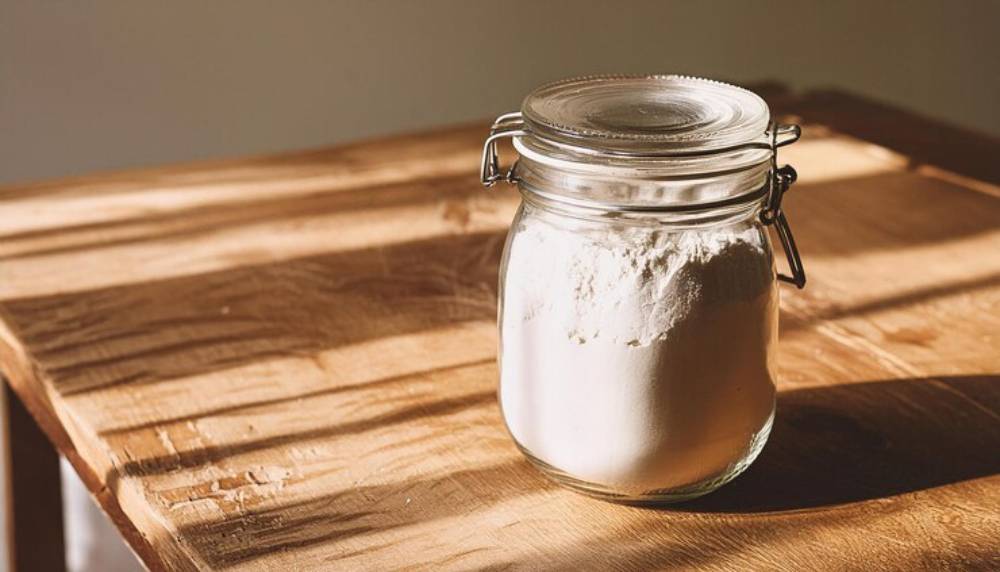
- Use sealed containers in a fridge or freezer for best shelf life (especially whole grain flours)
- Bring to room temperature before using for baking
- Avoid cross-contamination with strong-smelling items like spices
Shelf life: Whole grain flours = ~3–6 months unrefrigerated, 6–12 months refrigerated
Spices, Salts, and Dried Items
- Store in dark containers or inside drawers — light degrades essential oils
- Avoid keeping spices above your hob or near the oven
- Rotate stock regularly — ground spices lose potency faster than whole spices
Dried heirloom chillies can last over a year if kept dry and away from heat. To revive, soak in warm water for 15–20 minutes.
Oils, Vinegars, and Extracts
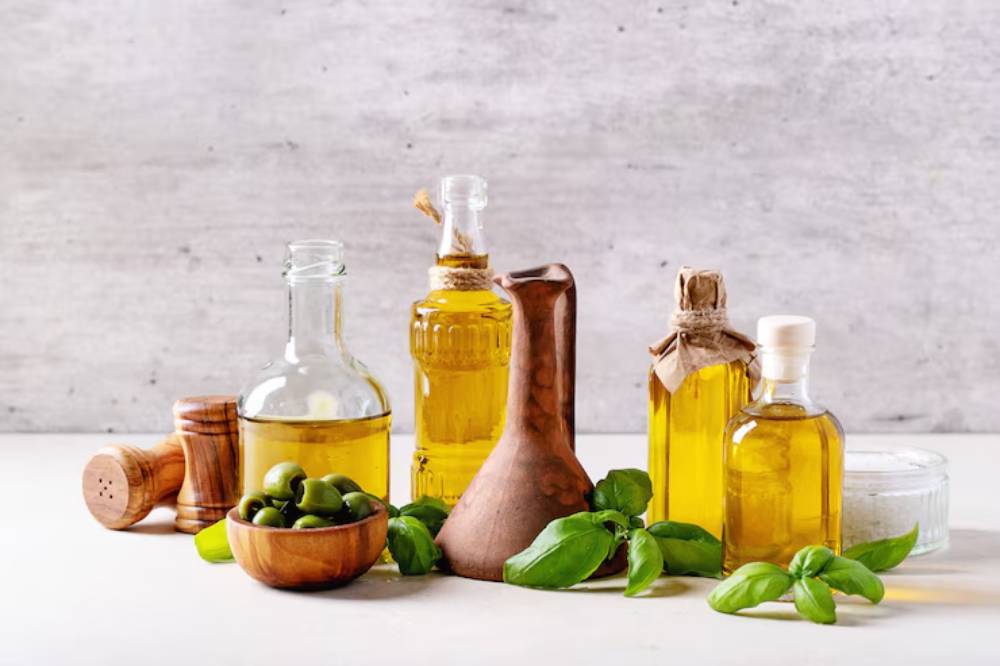
- Keep sealed, cool, and upright
- Store nut oils and artisan vinegars in the fridge if not used regularly
- Always check for cloudiness or off smells before use
When stored well, these pantry essentials become flavour workhorses that amplify your dish without overwhelming it.
Organising Your Gourmet Pantry
Once you’ve stocked up, a well-organised pantry can improve not just your cooking, but your mindset in the kitchen.
Design Tips
- Group by use: Keep grains, beans, flours, and dried goods together
- Use clear, labelled containers: This encourages you to use what you have
- Create a gourmet zone: A section just for heirloom and speciality items
- Keep a seasonal rotation list: Prioritise fresh-stocked items and plan meals around them
If space is tight, repurpose open shelving or stackable containers. You don’t need a walk-in larder to cook like a pro — just a system that makes ingredients accessible and visible.
Real-World Experiences with Heirloom Staples
“I started using heirloom beans in my stews and the difference was night and day — they hold their shape, and the flavour is bold but comforting.” – Rachel, Oxfordshire
“Spelt flour changed how I bake. It’s nutty and earthy, and it makes even basic loaves feel gourmet.” – Samir, Bristol
“My pantry used to be a mishmash of half-used packets. Now that I’ve curated a few key heirloom staples, everything feels more purposeful — and meals taste better too.” – Lucy, Glasgow
When you work with ingredients that are naturally vibrant, your cooking becomes more intuitive and inspired — even midweek meals feel intentional.
Why It Matters: The Gourmet Pantry as a Personal Statement
Stocking heirloom pantry staples isn’t about status or aesthetic. It’s a culinary value system — a commitment to quality, story, sustainability, and depth.
It helps you:
- Cook more creatively, with fewer but better ingredients
- Support small-scale growers and food sovereignty
- Learn the why behind the what in your meals
- Build meals with soul, not just technique
And if you’re experimenting with seasonal cooking or planning summer gourmet meals that showcase heirloom tomatoes, the right pantry ingredients will elevate every element on the plate.
Conclusion: Curate Your Pantry, Elevate Your Cooking
A pantry stocked with heirloom ingredients isn’t just a storage space — it’s a launchpad for your most flavourful, thoughtful meals. By carefully sourcing and properly storing these gourmet staples, you gain access to richer textures, deeper flavours, and a stronger connection to where your food comes from.
Whether you’re blending Red Fife flour into a rustic cake, simmering Black Valentine beans with aromatics, or finishing a salad with a dash of heirloom cider vinegar, you’re honouring the ingredient as much as the outcome.
So open that cupboard and start with intention. Your pantry has the power to inspire every dish, one heirloom at a time.

